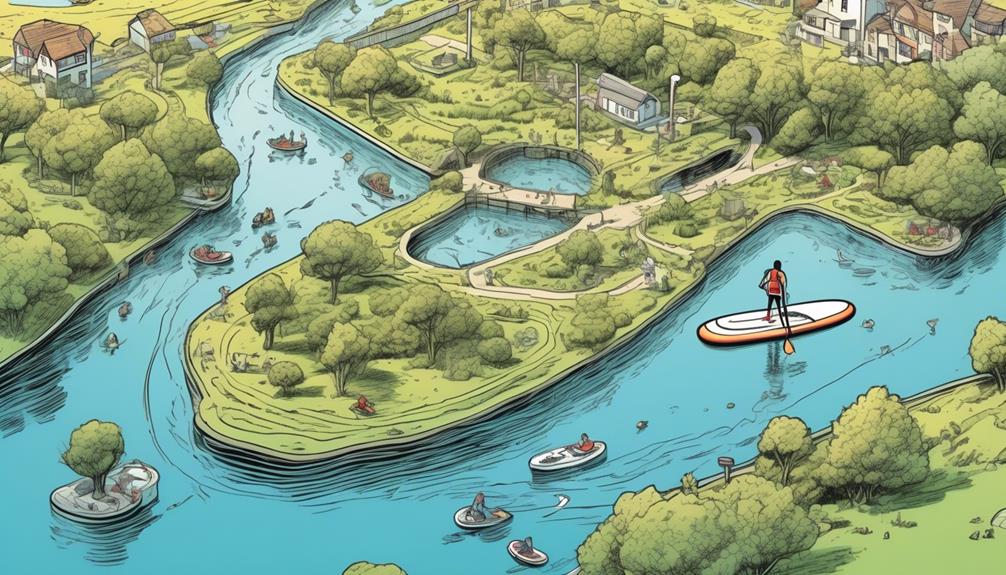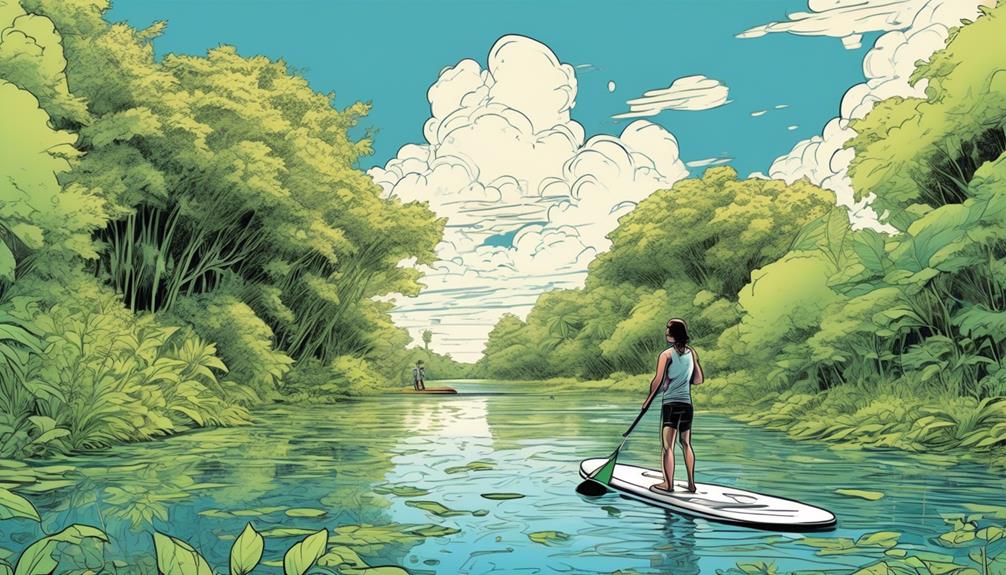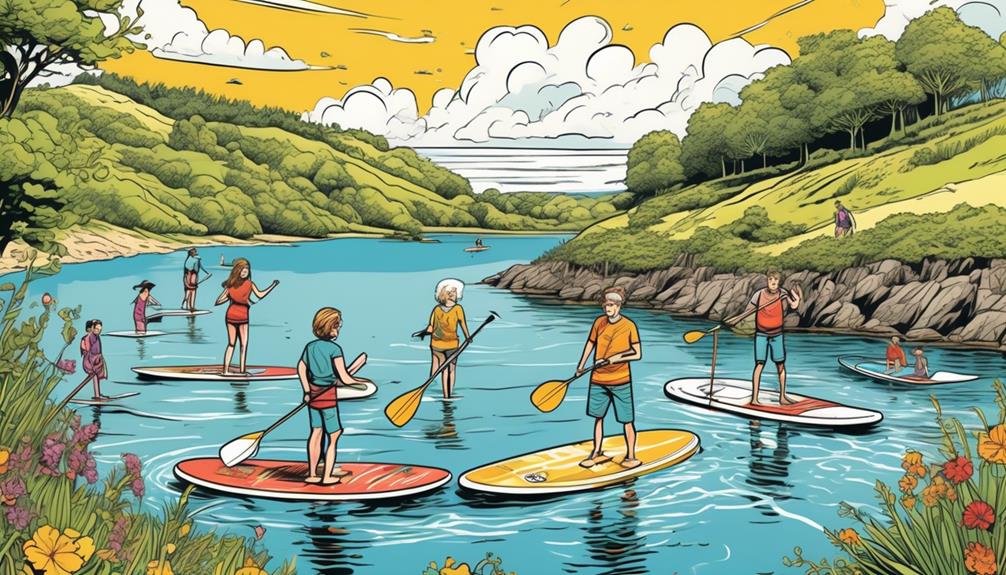Last summer, I took my inflatable paddle board to a peaceful lake in the Lake District, only to discover the complex web of access rights and regulations surrounding UK waterways.
It turns out, you can't just paddle anywhere. Coastal areas are usually fair game, but rivers and lakes? That's a whole different ball game.
In this chat, I'm breaking down the regulatory maze with real talk and data-driven insights. For example, only 4% of rivers in England and Wales are openly accessible to paddle boarders. If you're scratching your head wondering where you can actually paddle without getting a side-eye, you're in the right place.
I'll share personal stories, highlight environmental and safety regulations, and provide practical tips on navigating these waters. Whether you're a seasoned paddler or a newbie, understanding these rules isn't just about avoiding fines—it's about respecting our beautiful waterways and keeping safe.
So, if you're keen on avoiding my mistakes and making the most out of your paddle boarding experience, stick around.
Key Takeaways
- Understanding water access rights and regulations is crucial for paddle boarding in the UK.
- Different rules and permissions apply to navigable and non-navigable waterways.
- Utilizing technology, such as apps and websites, can provide real-time information on water access.
- Respecting rules and regulations, as well as the environment and wildlife, is important for a smooth paddle boarding experience.
Understanding Water Access Rights

Navigating water access rights in the UK, especially for us inflatable paddle board aficionados, feels like decoding a complex puzzle. You're probably thinking, 'Can't I just launch anywhere?' But nope, it's not that straightforward.
Let me break it down for you with some real-world data to make it digestible.
First off, we've got two main flavors of waterways: navigable and non-navigable. Sounds simple, right? But here's where it gets interesting.
For navigable waters, which you'd think would be a free-for-all, you often need a license. This isn't just bureaucratic tape—according to the Canal & River Trust, licensing helps maintain and preserve these waterways. For instance, a day pass for a craft less than 3 meters costs around £7.20—a small price for a day's adventure but essential for the waterway's upkeep.
Now, non-navigable waters are the wild card. You might need a nod from the landowner, which varies wildly. In some places, it's a firm no, while in others, a small fee or a friendly request might get you access. It's a patchwork of permissions that requires some legwork on your part.
Here's a game-changer: technology. Apps and websites have started serving up real-time data on launch spots and restrictions. It's like having a waterway GPS at your fingertips, making it easier to hit the water responsibly. This isn't just convenient; it's a big leap towards sustainable water sports.
Before I even think about inflating my board, I hit up the latest apps for the scoop. It's saved me more times than I can count from paddling into trouble. And let's be honest, it also saves the hassle of getting fined or worse, damaging sensitive habitats.
So, why should you care? Well, if you're keen on hitting the water without a hitch, a little research can go a long way. Plus, by respecting these rules and regulations, we're not just keeping the peace; we're also contributing to the conservation of these beautiful spaces. It's a win-win.
Coastal Waters and Beaches
Hitting the coastal waters and beaches with an inflatable paddle board? Let's talk about what you need to know to not just survive, but thrive. I've been out there, paddle in hand, more times than I can count. What I've learned along the way isn't just advice—it's practically gospel.
First off, local regulations aren't just a suggestion; they're your playbook. I found out the hard way that some spots are no-go zones for paddle boarding. Did you know in some coastal areas, there are specific zones designated just for us? I didn't—until I got schooled by a local park ranger. Now, I always hit up the local beach's website or those handy info signs before I even inflate my board.
Next up, marine life. Those critters aren't just living their best life; they're part of an ecosystem we're just visiting. I remember this one time I was paddle boarding near a seal conservation area. I didn't even realize it until I saw a mother seal and her pup chilling on a buoy. That's when it hit me: We've got to steer clear of their homes. It's not just good karma; it's respect.
Tidal changes can make or break your paddle boarding adventure. Picture this: you're out there, the sun's setting, and suddenly, you realize the tide's gone out, leaving you in a tricky spot to get back. Been there, done that. Now, I check the tide tables religiously. A simple app on my phone keeps me in the loop, so I'm never caught off guard.
And let's not forget about respecting other beach users. Ever had a surfer cut really close because you were in their way? Or maybe you've accidentally invaded a swimmer's personal bubble. Spaces are shared, and understanding that makes everything smoother. Giving everyone enough room isn't just polite; it's essential for a drama-free day on the water.
So, you see, navigating the waters with your inflatable paddle board isn't just about keeping it inflated and staying afloat. It's about being informed, respectful, and safe. And honestly, when you get it right, there's nothing better than that feeling of gliding over the waves, knowing you're doing your part for the environment, the local rules, and your fellow beachgoers.
Keep these tips in mind, and you're not just a paddle boarder; you're a smart, responsible member of the coastal community.
Navigating Rivers and Lakes

So, you're curious about hitting the rivers and lakes with your paddle board, right? Well, let me walk you through some of the essential bits of wisdom I've picked up along the way. It's a whole different beast compared to coastal adventures, but trust me, it's just as, if not more, exhilarating.
First up, let's talk river currents. These aren't your ocean's tides that you can predict with a neat little timetable. Rivers have their own rhythm, and if you're not careful, they'll dictate your pace, not the other way around. For instance, a river with a flow rate of 500 cubic feet per second (cfs) is manageable for most, but bump that number up to 1000 cfs, and you're in for a tough ride if you're not experienced. Checking the US Geological Survey's real-time water data before heading out has saved my skin more times than I can count.
Now, onto lakes. You might think they're the chill cousins of rivers, but wind can quickly turn them challenging. I've had days where a breeze turned a leisurely paddle into what felt like an endurance marathon. It's all about planning your route. If the wind is blowing north at 10 mph, start your journey heading into it. That way, you're fighting the wind when you're fresh, and it's at your back when you're tired on the return leg.
Finding a place to start your adventure is another piece of the puzzle. Not every spot along the river or lake is public land. I've had to do some serious research to avoid accidentally trespassing. Google Maps and local waterway access forums have been invaluable. Trust me, it's worth the effort to find those perfect, legal launch spots.
And here's the deal with respecting our playgrounds – it's non-negotiable. I'm talking about not leaving a trace behind and being mindful of the wildlife. Did you know that simply steering clear of nesting areas during certain seasons can have a significant impact on local bird populations? It's facts like these that underscore the importance of our behavior on these waters.
Environmental and Safety Considerations
Hitting the rivers and lakes on an inflatable paddle board is my kind of adventure, but let's talk about doing it without trashing our planet or risking our necks.
You're probably like me, wanting to soak in the beauty without leaving a mark, or worse, getting into a bind. Here's how I manage that tightrope walk:
- Wildlife Respect is non-negotiable. Ever seen those viral videos where animals get way too close for comfort? That's not just bad luck; it's often because humans have invaded their space. Studies show that disturbing wildlife can lead to significant changes in their behavior and even their population numbers. So, when I paddle, I keep my distance, ensuring they continue their natural routines without a human-induced adrenaline rush.
- The Carry In, Carry Out philosophy is something I live by. You'd be shocked by the stats – according to the Environmental Protection Agency, millions of tons of trash end up in our waterways annually. My rule? If it comes with me, it leaves with me. No exceptions. This way, I'm not contributing to the eye-watering pollution levels that threaten aquatic life and water quality.
- I always Stick to Designated Areas. You know those 'Keep Out' signs? They're there for a reason. Whether it's protecting nesting grounds or preventing human-induced erosion, these guidelines are based on hard data aimed at preserving the environment. Ignoring them can lead to habitat destruction and even the extinction of local species.
- Safety is where I draw a big, bold line. Wearing a life jacket isn't about cramping my style; it's about not becoming a statistic. The U.S. Coast Guard reported over 4,000 boating accidents in recent years, with a significant portion due to negligence. A life jacket isn't just a piece of gear; it's a lifesaver, ensuring that I'm not putting myself or rescue teams in danger.
By focusing on these points, I get to enjoy the thrill of paddle boarding while keeping my conscience clear and my body safe. It's about being smart and considerate – to nature and ourselves. Trust me, the satisfaction of a guilt-free adventure is worth more than any temporary thrill of bending the rules.

